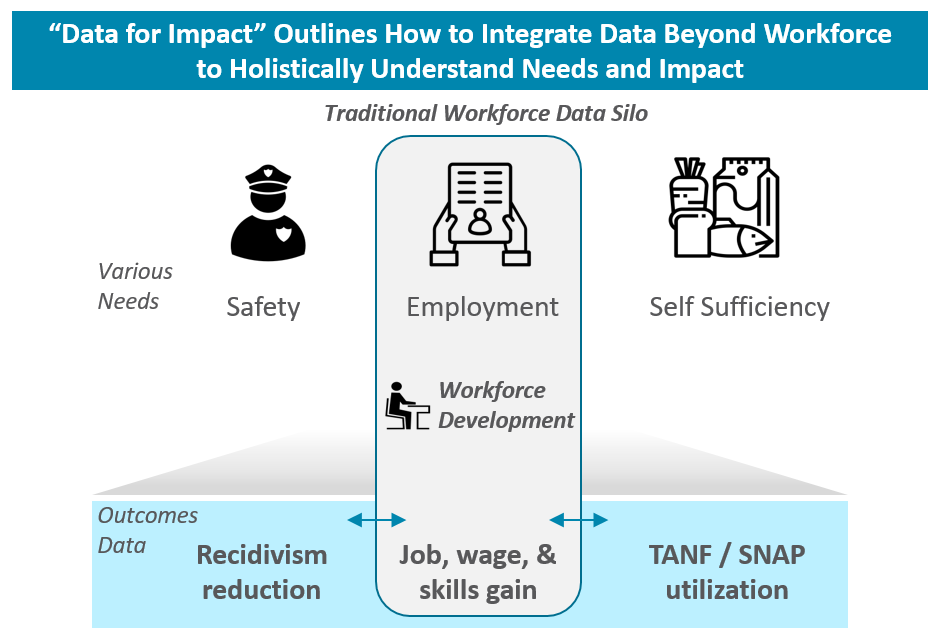We’ve invited the GEAR Center Challenge Winners to write “guest blogs” to provide more detail on their projects. This post is a follow up from Third Sector Capital partners on their project. The opinions expressed in this guest post are the authors’ own and do not reflect the views of Performance.gov or U.S. General Services Administration.
Serving At-Risk Youth Can be Challenging
The Northern Virginia regional workforce board, Virginia Career Works - Northern and its non-profit arm, the SkillSource Group, Inc., wanted to find a new way to solve a persistent challenge. Their WIOA training and employment programs for young adults were widely available. Yet the programs were not always reaching the youth who faced high barriers to economic opportunity.
SkillSource’s programs serve young adults ages 17-24, and help them gain the skills needed to succeed in the workforce. The workforce board wanted to specifically change the way it engaged young adults with prior involvement in the foster care or juvenile justice system, and who are out of school and not employed. Many of the youth eligible for the program can be identified by data in the state human services, education and justice systems, and may receive public assistance support like SNAP or TANF. Yet all of these public systems are often separate from one another and not coordinated – making data sharing and identification of youth in need especially challenging for a workforce board.
A Collaboration
This is where Third Sector Capital Partners came in. Third Sector is a non-profit organization that helps government and community partners improve service delivery through data to ensure that the publicly funded social service system is just, equitable and delivers measurably better outcomes. Discussions between SkillSource and Third Sector led to the “Data for Impact” project. The idea was simple. Together, they would look at federal, state and local data on these various programs and pilot an approach to integrate disparate data together. The idea is to identify, assist, and measure the impact of WIOA programs in the lives of the youth, and then share these results so other workforce boards and government agencies can benefit from their work.
The idea was a winner. As one of three Government Effectiveness Advanced Research (GEAR) Center Challenge grand prize winners in 2019, the team has spent the last year expanding impact measurement beyond traditional metrics. SkillSource and Third Sector looked at recidivism and public benefit utilization insights and combined that data with the traditional education and employment data used by most workforce boards. The result? A toolkit that lays out how to share data across these different systems. This roadmap will allow any workforce board to integrate multiple government data sets to improve their understanding of community needs and improve service delivery.
The Results
Third Sector embarked on a state-wide “data journey” to understand which data to access, how to sustainably integrate the datasets, and which data partners are typically best suited for such efforts.
Today the Data for Impact Roadmap and Toolkit is available for agencies.
The roadmap and toolkit allows agencies to:
- Describe the availability of data on public benefits utilization and recidivism, and the feasibility of accessing such data for local implementers like Virginia workforce boards
- Discuss the value of outcomes data integration and continuous improvement processes for programs administered by local government agencies
- Offer recommendations and next steps at the local, state, and federal levels to embed racial equity in program implementation and broadly improve performance management
What’s Next
Under the visionary leadership of the Virginia Chief Data Officer’s Commonwealth Data Trust, organizations like SkillSource are poised to operationalize the data road map published today to reorient training and support programs for populations who face some of the highest barriers to economic opportunity. The group is currently applying the lessons learned from “Data for Impact” to understand how to better equip 18-24 year-olds secure training and stable employment.
Integrated data allows government to:
- Deeply understand community need
- Tailor programs to the multiple challenges people face
- Understand the services most likely to lead to better outcomes
Other workforce boards should consider implementing similar data integration efforts to help inform how to maximize the impact of scarce resources when faced with rising unemployment rates nationwide. Continued federal support for efforts like “Data for Impact” ensures that training and funding from federal agencies are invested in efforts that holistically address community barriers to employment.
Systems-level data coordination ultimately accelerates the impact of WIOA Adult Training and Employment, WIOA Pay for Performance, and multi-agency efforts like P3 and the One Workforce initiative. We know that the road map and toolkit can help improve workforce development outreach, skills gain and employment, and ensure lasting impact after WIOA program completion. Check it out today.
For more information on this effort, please contact the Third Sector team at info@thirdsectorcap.org. View the Data for Impact Roadmap and Toolkit.

